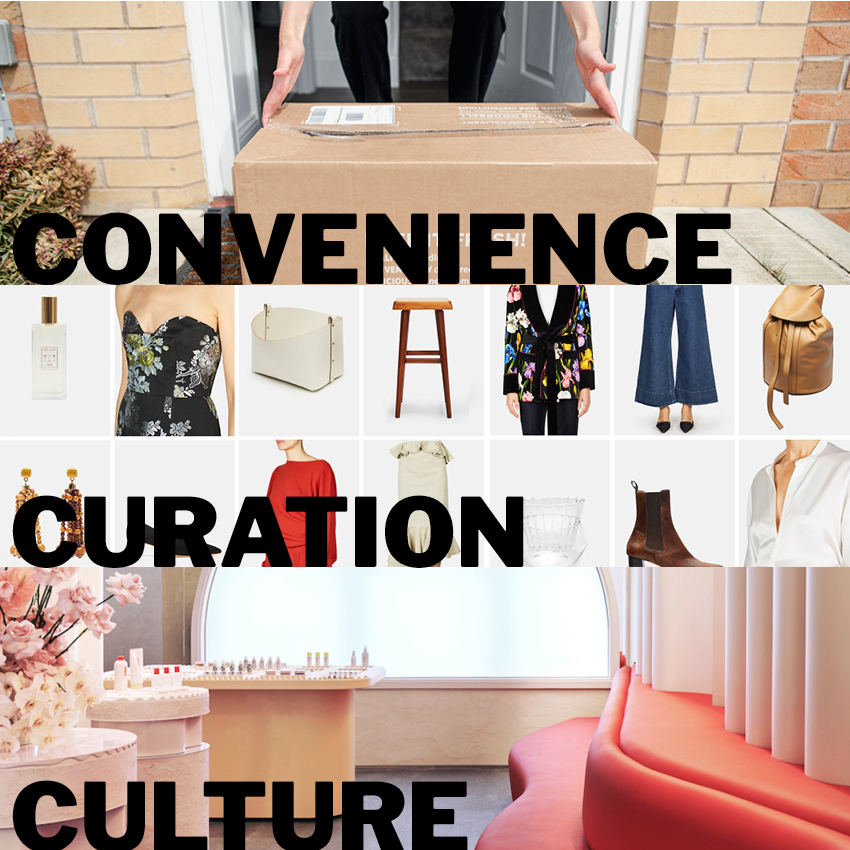\”Make no mistake, it\’s not revenge he\’s after. It\’s a reckoning.\” That was one of Val Kilmer\’s (as Doc Holliday) many memorable lines from the 1993 movie Tombstone, referring to Kurt Russell \’s (Wyatt Earp) vendetta against the \”cowboy\” faction that killed his brother. I like to think I have an extensive vocabulary, but that reference to \”reckoning\” sent me to the dictionary where I discovered an archaic meaning of the term as \”a bill, a payment or settlement of an account.\”
Pay Up
A reckoning, or a settlement of an account, describes what many retailers face today. The price for over-building, overextending, and overestimating their importance in the lives of customers has now come due after the radical reset caused by the Covid-19 pandemic. Ever since the 2008-2009 recession, it\’s been clear that retail needs a radical transformation. But too many established retailers failed to take heed, or if they did, they failed to act fast and decisively enough. Now retail\’s dysfunction has finally caught up and its reckoning is due.
Oliver Chen and Cowen Research offer direction for retailers that still have time to make that radical transformation is a new study called \”Retail\’s Modernization Initiative,\” part of its \”Ahead of Curve\” series. Unfortunately, with the growing list of retail bankruptcies, too many retailers are caught behind the curve.
\”The crisis is a catalyst for innovation,\” Chen and his team write. \”Store closures accelerated by the crisis will lead to additional mall closures, and brands and retailers need to pivot.\” The opportunity for innovation is both huge and imperative.
Who Needs the Store Anymore?
According to the study, the most radical transformation for retail is to extend from the store and digital platforms right into the home. The connected at-home is described as way to shape consumers\’ needs and lifestyles in a way not possible through its current omnichannel, bricks & clicks strategies. At-home is a priority (even necessity) as customers are spending more time in their homes and/or away from retail stores, but still want to engage regularly with their favorite brands. The recent acquisition of the at-home fitness company Mirror by athleisurewear retailer Lululemon is one notable example of a retailer leaning into the at-home opportunity.
[callout]The crisis is a catalyst for innovation. Store closures accelerated by the crisis will lead to additional mall closures, and brands and retailers need to pivot. The opportunity for innovation is both huge and imperative.[/callout]
The challenge is understanding what new role the brand can play as consumers shift toward eating, shopping, socializing, working, and as the case for Lululemon, exercising from home. Store traffic will continue to decline, so retailers need to increase home engagement with store employees live streaming to serve customers remotely and foster personal relationships that once took place only in-store.
To pull this off, more effective engagement marketing will be needed. \”Companies will need to both reallocate marketing dollars and content. This involves near-term brand building through creative marketing and social media engagement but should also incorporate building or acquisition of capabilities that allow for meaningful connection without physical interaction,\” according to the Cowen report.
Now Coming Safely to You
According to the research, change spurred by the pandemic is already underway. Curb-side pickup is an example of a safe contactless connection that is rapidly changing the dynamics of the grocery shopping experience. It will also be in demand across many other retail categories.
Online grocery shopping is expected to reach 20 percent penetration by 2025, capturing some $257 billion market share. At-home delivery will also propel more online grocery shopping. Cowen sees Walmart is way out front of competitors in this new at-home connected store model and started curb-side pickup in early 2015. This year when it was really needed, Walmart could seamlessly offer it at 3,200 locations, along with home delivery from over 1,900 stores. Local stores effectively become supply chain hubs, fulfilling a new delivery model for customers through smart operational retooling.
A Less-Is-More Mindset Shift
In another shift, Cowen foresees consumers continuing to maximize their shopping towards needs-based categories, such as grocery and personal care, and away from discretionary over-spending for clothing and accessories.
For years people have been complaining that they\’ve got too much stuff, yet all the while spending more money to store it and valuable time to organize it. The culture has shifted over the past four months, and people are finally ready to do something about the mindless accumulation of stuff. Less-is-more will cause massive disruption to retailers whose primary goal is to get people to buy even more stuff.
Cowen calls this a value and re-commerce shift: \”The new consumer in a post-Covid world will likely shift their spending toward re-commerce (rental and resale) and off-price retailers.\”
There will also be a move toward value retailers as the economy sinks further into a pandemic-induced recession. Beneficiaries of this shift will include Walmart, Target, Costco, the dollar store segment, as well as off-price retailers like TJX Companies, Burlington and Ross Stores.
Cowen writes, \”Offering exceptional value to the consumer can drive a sustainable competitive advantage as consumers are increasingly more price-conscious, increase savings and consider purchases more carefully.\”
Re-commerce is, of course, a value play too, since consumers pay less for secondhand goods, but it is also is fueled by consumers\’ growing concern about the negative effects of consumerism on the environment and society. As a result, they are choosing access over ownership (rental) and participating in the circular resale economy when appropriate.
Cowen estimates that re-commerce accounted for about seven percent of the apparel market in 2019 and expects its share to more than double by 2024. ThredUP, The Real Real, and Poshmark are the digitally native retailers that will profit from this shift.
The only thing holding these brands back is limited supply, which means convincing more consumers to consign their gently used items. But the runway for this is long, as Cowen finds only about 10 percent of the U.S. population has traded goods for resale, leaving 90 percent of consumers ready to join in. And these retailers have found that there is a considerable overlap in consigners and secondhand buyers. So, attracting more supply (i.e. consigners) also attracts more customers.
While all retailers must contend with the less-is-more mind shift, apparel retailers and department stores are going to bear the brunt of it.
Now Is the Time to Right-Size Store Fleets
The study also reports that as the resale market grows its share of the apparel market, department stores and mall-based retailers\’ share will shrink commensurately, from about 38 percent today to around 30 percent by 2024. This loss of market share, along with the fact that malls are the last place people want to be with the threat of contagion looming, Cowen predicts that as many as 400 malls will be closed, reducing their number from about 1,000 today to 600 in five years.
Prospects look especially bad for the roughly 400 C and D class malls, as Cowen expects the already announced 125 Macy\’s closures and 242 by J.C.Penney will hit hardest in these malls.
Inline tenants, which Cowen estimates comprise about 50 percent of mall tenancy, will follow these anchors out of the malls. Cowen anticipates greater mall store closure announcements coming from American Eagle, Gap, and Victoria\’s Secret. Looking more broadly, Cowen sees retailers with 1,000 or more locations most at risk.
Three Keys to Experiential Retail 3.0
The great retail reckoning has arrived because retailers largely ignored the many changes they needed to implement that were developing before the pandemic and which only accelerated during and after. Amazon and the many digitally native brands that optimized the at-home connection even before the Covid-19 retail shutdown are way ahead of retailers that simply tried to cobble e-commerce onto a rapidly weakening brick-and-mortar business model.
For the radical retail transformation needed, which is called s experiential retail 3.0, Cowen offers three keys:
- Convenience that makes the shopping and buying experience easy and quick, so it fits into people\’s fast-paced lifestyles. The convenience of online shopping, backed up by speedy home delivery or curb-side pickup, will grow in importance as consumers will prefer contactless and more convenient ways to purchase household necessities, like grocery.
- Curation differentiates a retailer in a crowded marketplace by offering special products uniquely tuned to their customers\’ value systems. Curating the retail selection in the post-Covid marketplace will put a rising emphasis on value (less expensive) and values (personal) that are most important to the customer, including sustainability and responsibility. Re-commerce leans into these consumer values, as well as offering a way to get more for less.
- Culture recognizes that consumers today don\’t necessarily need or want more things, but more meaningful experiences. While they have been forced to defer experiences including travel, dining, theatre and entertainment in the pandemic\’s wake, consumers will continue to shift spending from things to experiences once the danger lifts and they feel safe. So, retailers still need to focus on experiential retail, and now expanded further into the home as well.
Redefining Experience
The shift toward experiential retail will only accelerate in the post-Covid market with retailers now having to think seriously about reaching beyond their brick-and-mortar storefronts and their digital platforms to selling, servicing, and delivering products and services in the home.
\”Experiential retail 3.0 means addressing at-home lifestyle needs through creative and authentic community engagement. At-home execution requires both near-term and long-term investments that address the new needs of the consumers,\” Cowen reports.
This necessary transformation is both incredibly exciting and daunting. It requires retailers to think not just about how their customers engage in one aspect of their lives – shopping – but to expand their horizon and market opportunity to all aspects of their customers\’ lives. Even post-pandemic, consumers will continue to do more and more from the safety of their home spaces.




